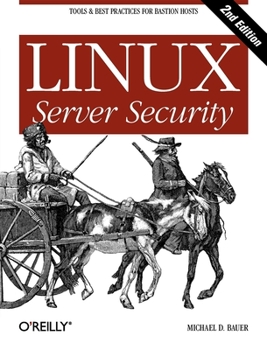Linux Server Security
Select Format
Select Condition 
Book Overview
Related Subjects
Administration Business & Management Certification CompTIA Computer Science Computers Computers & Technology Encryption Internet, Groupware, & Telecommunications LAN Linux Network Administration Networking Networking & System Administration Networks, Protocols & APIs Operating Systems Security & Encryption Servers Unix Web Development & Design Web ServersCustomer Reviews
Rated 4 starsFor sys admins
Linux Server Security, Second Edition By Michael D. Bauer Second Edition January 2005 ISBN: 0-596-00670-5 544 pages, $44.95 US (...) This book goes along with the moving trend of the normal computer user, securing your data. Servers generally are targeted more often than the average home PC because most are made to be accessible from the outside world. This is where securing that server comes into play. This book covers the...
0Report
Rated 5 starsGreat Reference for New Server Admins
I highly recommend this book to anyone who is involved with securing Internet servers. The book strikes a nice balance between theoretical background and implementation examples. Though certainly not all encompassing, the book touches on several key elements of server security, including DNS, Email, File Servers, Web Services, IDS methods and more. People new or just curious about Linux server security will gain the...
0Report
Rated 5 starsVery helpful
I am quite happy that there are books like Linux Server Security. A lot of people think Linux is bullet proof, but its not. If not configured correctly, it can be just as insecure as Windows. Linux Server Security is an important and timely book in that it shows how to harden Linux to be very secure.
0Report
Rated 5 starsGood Coverage of the General Rules
It used to be that Linux was so much safer than Windows because of the sheer number of people out attacking Windows. But now there several reasons for the bad guys to attack Linux: 73 (or so) of the web servers run Linux, more than that run DNS or mail, these tend to be powerful boxes with big communications pipes - just what the Spammers need. As the book says it's futile to expect perfect security unless you turn off...
0Report
Rated 4 starsSolid, but perhaps too broad
This is a somewhat high level walkthrough of all Linux related security issues, from basic networking and operating system issues, to web server configuration and scripting language security. At about 500 pages that's a tight squeeze, even for O'Reilly. Some of the coverage suffers, specifically I found the security information on PHP to be very scanty given the popularity of the language and how often web applications that...
0Report














